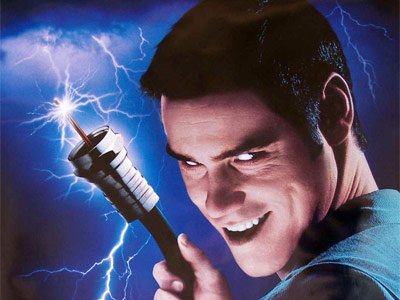Apple’s iTV is reportedly in the labs of Canadian cable service providers Rogers Communications and Bell Canada right now. This is exciting news (it is real!), but it’s a bummer for those of us who were hoping that Apple was planning on disrupting the cable television business. If Apple is letting the cable companies play with its new toy, then they’re probably in the market for content partners. And as long as those content partners are cable companies, we can stop holding our breath for The Perfect TV Experience.
Partnering with cable companies shows that Apple didn’t (or couldn’t) put in place the deals that they wanted to in order to give us content, so they are forced to rely on the providers (cable companies) with preexisting deals. It also makes financial sense for Apple to partner with them because these cable companies already have partnerships with networks and studios, built-in customers, and a distribution network already in place to deliver content; Apple could piggyback on the infrastructure, inserting itself just in the last-stage and greatly impacting the user experience.
This also means Apple is only settling for half the dream: The iTV will change the way we interact with content, and how we experience it, but it won’t change the fact that we pay $100 each month for 100 channels we don’t want, and it won’t do anything about the fact that cable companies are terrible. And it’s not surprising. There’s not nearly as much money to be made by Apple or the networks or the cable distributors in an a la carte business model. The old school way of doing business has been very good to a lot of the people who control the content.
Look at Netflix. In the beginning they got content deals for peanuts from the studios/networks, but once they showed some success, contracts were pulled and prices were increased ten-fold. Remember when we could get all the content from Starz on Netflix? The original deal was $30 million in October, 2008. Now, CEO Reed Hastings is willing to fork over more than $200 million for the same deal, but even that isn’t enough for Starz. In November of 2011, contract talks stalled, and Starz’ Chris Albrecht said they “didn’t need this deal”. Now, Starz content is set to expire this month. Netflix is a great — if imperfect — product for consumers, but the company’s profit margins for its streaming business are only 11%, compared to 52% for DVD rentals. Content makers want what they feel they are owed. Once they move to an on demand model for all their content, there’s no going back.
Apple’s partnership with cable companies will also keep us shackled to this notion of appointment viewing. Shows air on the network’s schedule, period. iTunes offers a great deal of content for purchase, but it’s often a rental or an outright purchase per show or movie. It’s not subscription based content. The DVR is great too, but it’s a stopgap, still dependent on the networks’ schedules and meant to help us catch up with what we’ve missed. It’s not designed to hold all of the content we want in one place.
On top of all that, these cable companies are terrible: bad customer service, outrageous prices, outdated interfaces, and the infuriating fact of paying for 200 channels, when we really only want Sportscenter, Myth Busters and Curb Your Enthusiasm. If you have a problem with your cable, you still deal with the big cable company. If Apple partners with them, the biggest (only?) change we’re going to see is the overall experience of consuming content. We’ll be able to interact with the content, with added layers of engagement. We’ll have game shows that we play from home, and workouts that we do with friends around the world. Video-conferencing will be an everyday tool. But, the cable companies know content is king. So long as they control that, their business models are safe.
So what will it take for Apple to actually revolutionize TV? They would have to gamble that they could lose little enough paying for all the content, and hope that it’s made up for—and then some—on the hardware sales. Buying directly from the studios in addition to partnering with cable companies could provide an extremely robust experience. That would require taking a loss in one area for exceptional gain in another, which isn’t outrageous. We’ll see if that’s the case. No matter what, we should all be looking for a phenomenally designed product that’s no doubt going to change the way we interact with content. Let’s just hope it’s all the content we want, when we want it.
